
All categories
Featured selections
Trade Assurance
Buyer Central
Help Center
Get the app
Become a supplier

(142 products available)





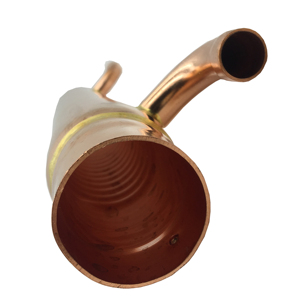







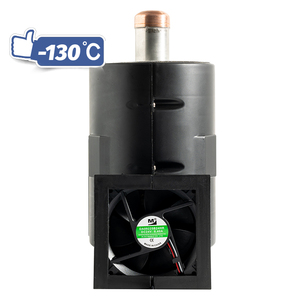
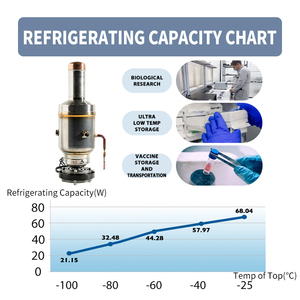


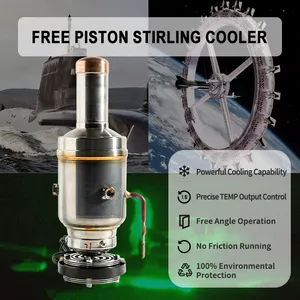
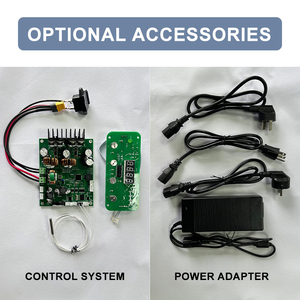






















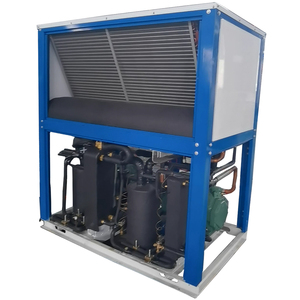

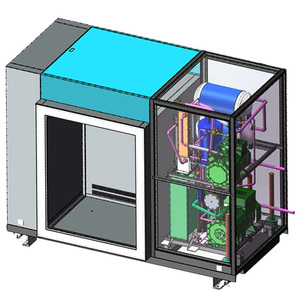
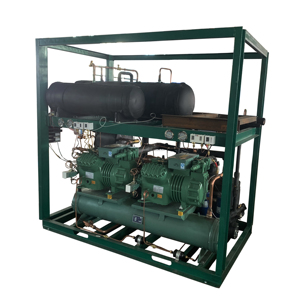


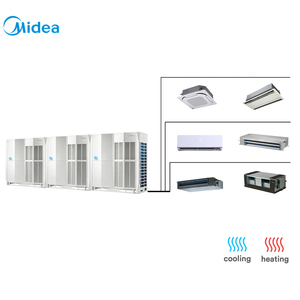

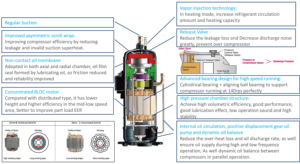
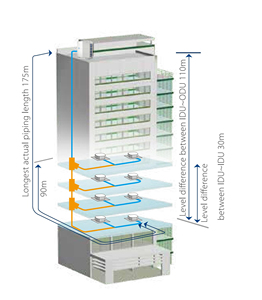

A subcooler is a device used to cool down a liquid below its saturation temperature, which is the temperature at which the liquid is in equilibrium with its vapor. Subcoolers are commonly used in various industries, including refrigeration, air conditioning, and petrochemical processes. There are several types of subcoolers, each designed to meet specific requirements and applications.
Shell and Tube Subcooler:
Shell and tube subcoolers are the most typical subcoolers and are used in various applications. They are designed with a series of tubes bundled together inside a cylindrical shell. One fluid flows through the tubes, while the other fluid flows through the shell, allowing for heat exchange. The design of subcoolers makes them efficient for cooling and heating applications, and they can handle high-pressure differences between the two fluids.
Plate Subcooler:
Plate subcoolers are compact and efficient heat exchangers that use plates to create a large surface area for heat transfer. The fluids flow through alternating channels formed by the plates, allowing for close thermal contact and efficient heat exchange. Plate subcoolers are often used in refrigeration and HVAC systems, where subcooling is required to improve system efficiency and reliability.
Fin Fan Subcooler:
A fin fan subcooler is an air-cooled heat exchanger that uses finned tubes and forced or natural air to achieve subcooling. Fans are used to increasing the airflow over the finned tubes, enhancing heat transfer and subcooling efficiency. Fin fan subcoolers are often used in gas processing and petrochemical applications, where precise temperature control is critical to process efficiency and product quality.
Coil Subcooler:
Coils are often used in refrigeration and HVAC systems. They are designed as coils of tubing installed in a refrigerant circuit. The coils are exposed to low-temperature environments or receive cooling from other system components. This design allows the coils to absorb heat from the surrounding environment or other system components, promoting subcooling and enhancing the overall efficiency of the refrigeration or HVAC system.
Cooling Tower Subcooler:
Cooling towers are large structures designed to dissipate heat from industrial processes or HVAC systems by using water as the cooling medium. They facilitate the transfer of heat from the water to the air, allowing the cooled water to be recirculated in the system. The cooling tower subcooler enhances the cooling tower's cooling capacity by further lowering the temperature of the recirculated water below the saturation point, optimizing the overall cooling efficiency of the system.
There are several specifications of Subcoolers to consider when purchasing. They include:
Subcooler capacity
The subcooling capacity of a subcooler is crucial and must be considered. It is measured in British thermal units per hour (BTU/h) or watts (W). This indicates the maximum limit of heat that can be eliminated from the refrigerant in the time unit. The capacity must match the requirements of the cooling system to ensure optimal performance.
Pressure drop
Pressure drop is another important specification to consider. It is the difference in pressure between the inlet and outlet of the subcooler. It is usually measured in pounds per square inch (psi) or pascals (Pa). A big pressure drop can reduce the efficiency of the system by increasing the pump power requirement or compressor. The pressure drop should be minimized to reduce the impact on the system's performance.
Material
Subcoolers are made of different materials. The most common ones are stainless steel, copper, and aluminum. Each material has its advantages and disadvantages. For example, aluminum is lightweight and corrosion resistant, making it suitable for mobile applications. On the other hand, copper has excellent thermal conductivity, which makes it widely used in subcoolers.
Size
The size of the subcooler is another specification to consider. Subcoolers are available in different sizes, from small portable ones to large industrial ones. The subcooler size required will depend on the cooling capacity required and the application. A large subcooler will be more efficient but will consume more energy.
Temperature difference
The temperature difference is the difference in temperature between the refrigerant and the cooling medium. This should be high to ensure efficient heat transfer. The temperature difference is usually measured in degrees Celsius (°C) or Fahrenheit (°F).
To maintain a subcooler, the following requirements should be put into consideration:
Subcoolers are essential components in many industrial processes, particularly in oil and gas production. They enable the efficient and controlled cooling of fluids, which is vital for maintaining optimal process conditions and enhancing operational efficiency. However, choosing the right subcooler for a specific application can be complicated. Here are some factors to consider when choosing a subcooler.
Process requirements
Consider the specific process requirements where the subcooler will be installed. Determine the cooling duty or heat transfer rate required, the inlet and outlet temperatures of the fluids involved, and the flow rates. Understanding these parameters will help select a subcooler that meets the desired cooling performance.
Fluid characteristics
Take into account the properties of the fluids that need to be cooled and the fluids used for cooling. Consider aspects such as viscosity, phase (liquid or gas), and any potential corrosive or fouling tendencies. Choosing a subcooler design and materials resistant to corrosion and fouling is essential to ensure reliable and efficient cooling.
Space constraints
Subcoolers come in various sizes and configurations. Consider the available space for installation and any size or footprint limitations. Selecting a subcooler that fits the designated area and allows for proper fluid connections and maintenance access is necessary.
Energy efficiency
Subcoolers can have a significant impact on overall system energy consumption. Look for subcooler models designed for energy efficiency, such as those with low-pressure drop characteristics and high heat transfer efficiency. Energy-efficient subcoolers can contribute to reducing operating costs and minimizing environmental impact.
Maintenance and reliability
Consider the reliability and ease of maintenance of the chosen subcooler. Look for models with durable construction and reliable components, such as corrosion-resistant materials and robust cooling elements. Additionally, consider the accessibility of the subcooler for routine maintenance, cleaning, and potential component replacement.
Customization and flexibility
If the subcooler needs to be adapted to specific process requirements or future changes in the process, consider its customizability and flexibility. Some subcoolers offer options for adjusting cooling capacity, flow distribution, and other parameters to suit specific needs.
Cost and total cost of ownership
Evaluate the initial cost of the chosen subcooler and consider the total cost of ownership, including energy consumption, maintenance, and potential downtime. Sometimes, a slightly higher initial investment in a more efficient and reliable subcooler can result in significant long-term savings.
Here is a guide on how to DIY and replace a subcooler:
Identify the Issue
Check if the subcooler is leaking, making strange noises, or not cooling down properly. Knowing the exact problem will help in the replacement process.
Gather Necessary Tools and Materials
One will need to get the right tools for the job, such as wrenches, screwdrivers, pliers, and possibly a torx driver. Besides, having a new subcooler or replacement parts on hand is essential. Ensure that the new subcooler part one will be using is compatible with the existing system.
Safety Precautions
Before starting, it's important to take safety precautions. Turn off the subcooler and let it defrost if it was working. Unplug it from the electrical supply. Also, ensure proper ventilation and wear protective gear, such as gloves and safety goggles.
Dismantling the Old Subcooler
Once the cooler is switched off and unplugged, start removing any covers or panels that may be in place. Follow the manufacturer's manual or online guides to take apart the subcooler safely. Use the appropriate tools to avoid damaging any parts. As one disassembles the cooler, keep track of screws and small parts in a designated area so they don't get lost.
Disconnecting the Components
One will need to disconnect the components connected to the old subcooler. This may include electrical connections, plumbing lines, and ductwork. Again, refer to the manual to know how to do this safely without causing any damage. Make sure to label the connections to ensure correct reassembly with the new subcooler.
Installing the New Subcooler
Now it's time to install the new subcooler. Position it in place and connect all the components that were previously disconnected. Follow the manufacturer's instructions for each step to ensure everything is done correctly. Once the subcooler is installed and all connections are made, do a thorough check. Ensure there are no leaks, loose electrical wires, or anything out of place. Turn on the cooler and monitor its operation for a while to ensure everything is working as it should.
Reassemble and Clean Up
Once one is satisfied with the subcooler's performance, reassemble any covers or panels that were removed. Clean up the work area and dispose of any old parts or materials according to local regulations.
Q1: What is a subcooler?
A1: A subcooler is a heat exchanger that is used to remove heat from a refrigerant or process fluid to improve system efficiency and performance.
Q2: What does a subcooler do?
A2: A subcooler cools down the liquid leaving the condenser in a refrigeration or cooling system, ensuring it is at a lower temperature before entering the expansion valve. This increases the system's efficiency and performance.
Q3: What is subcooling in refrigeration?
A subcooler is a component in refrigeration and air conditioning systems that ensures the refrigerant in liquid form is cooled below its saturation temperature before entering the evaporator. This improves the system's efficiency and increases its cooling capacity.
Q4: Do all coolers have subcooling?
A: No, not all coolers have subcooling. Subcooling is a feature that can be found in some coolers, particularly those designed for more advanced or high-performance applications.